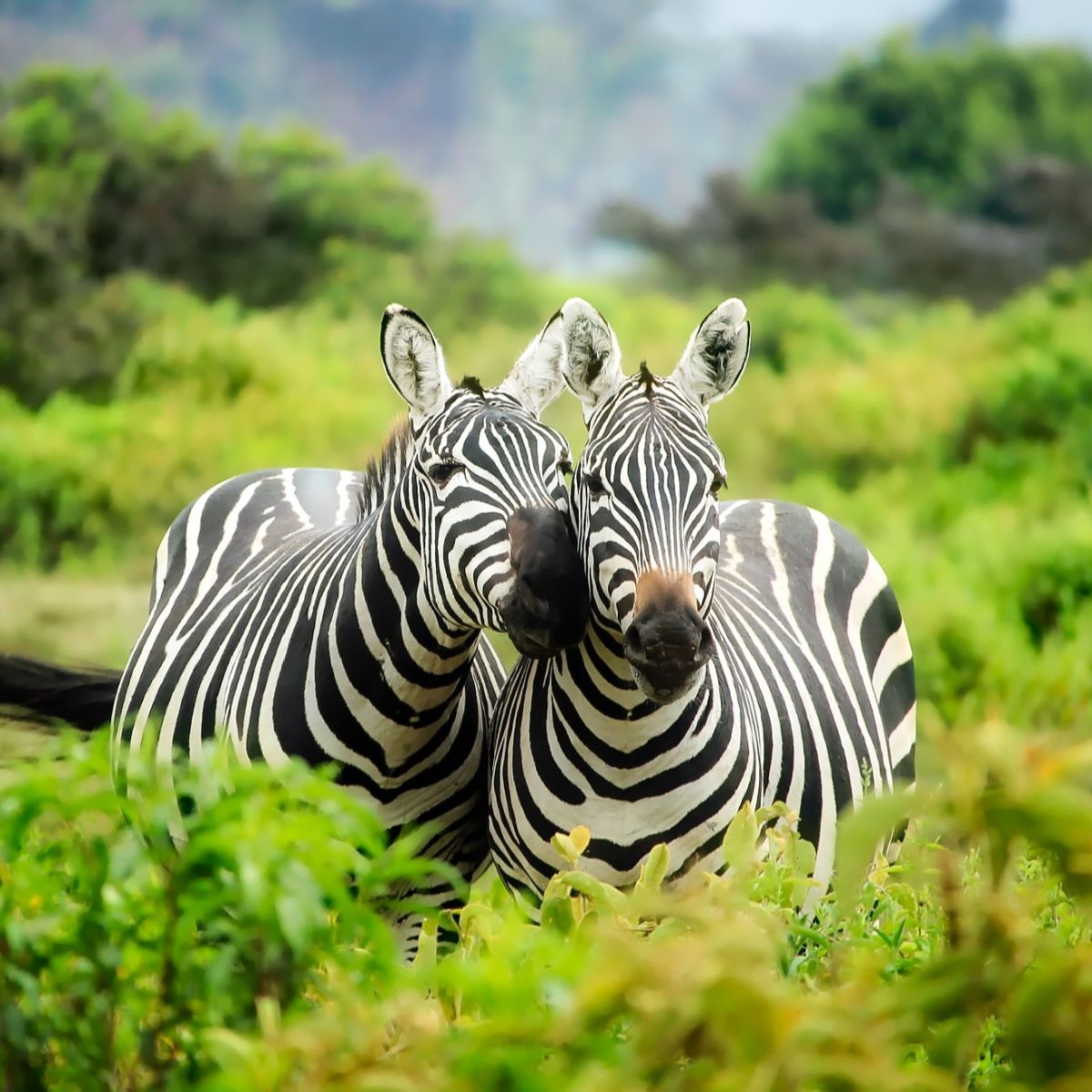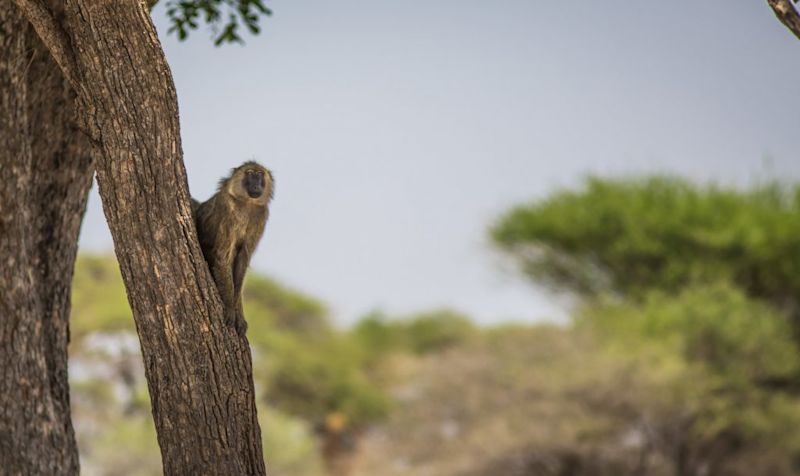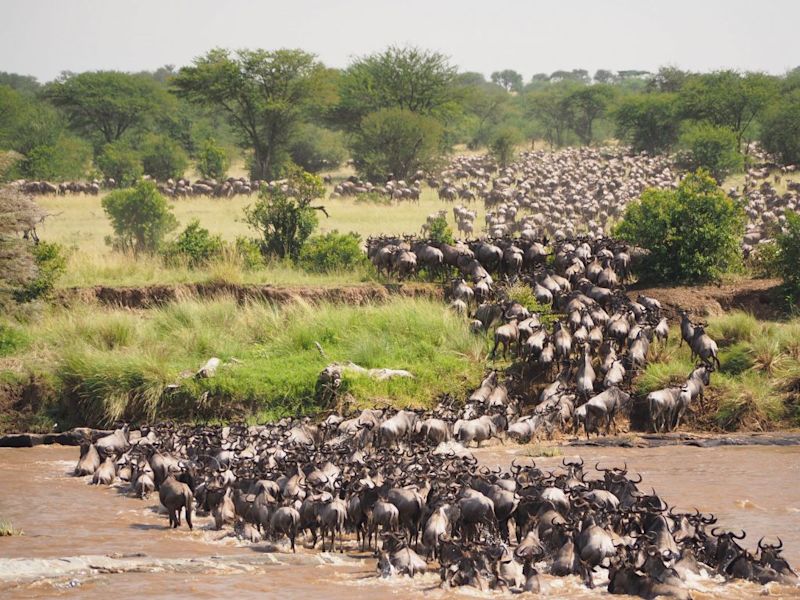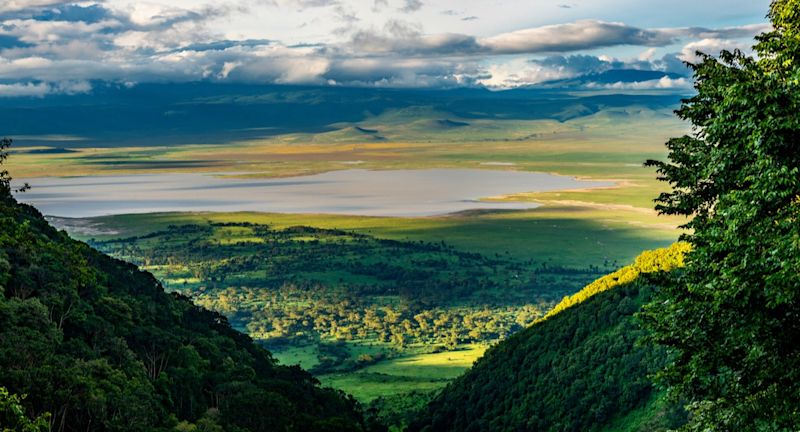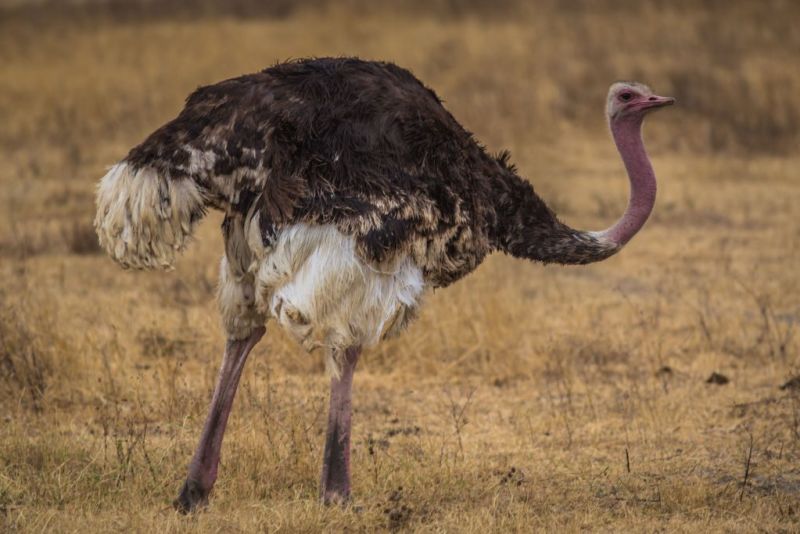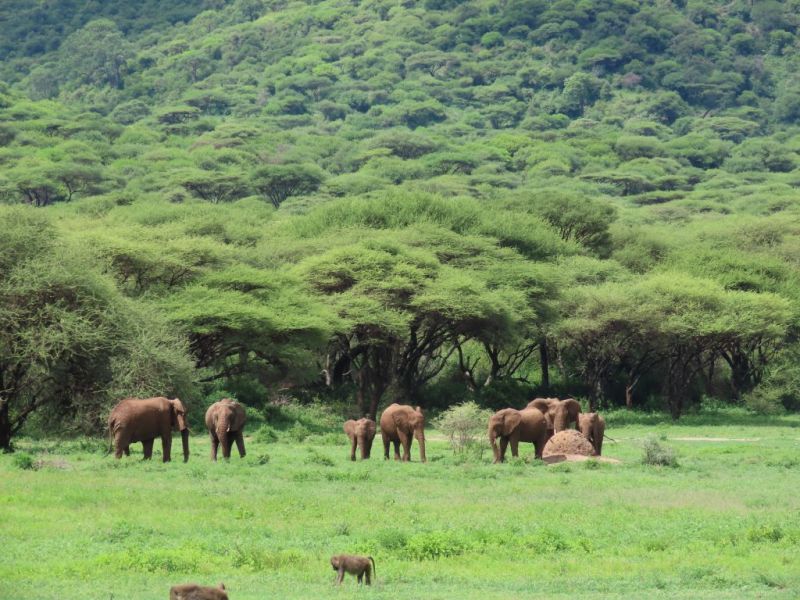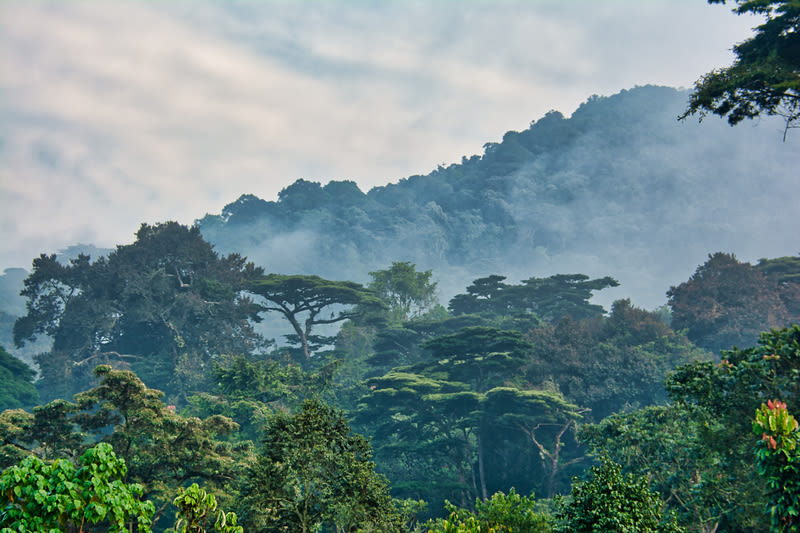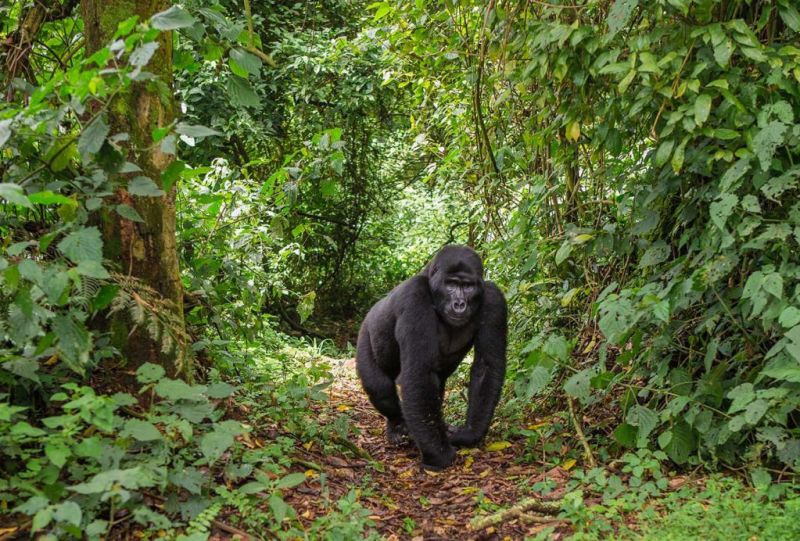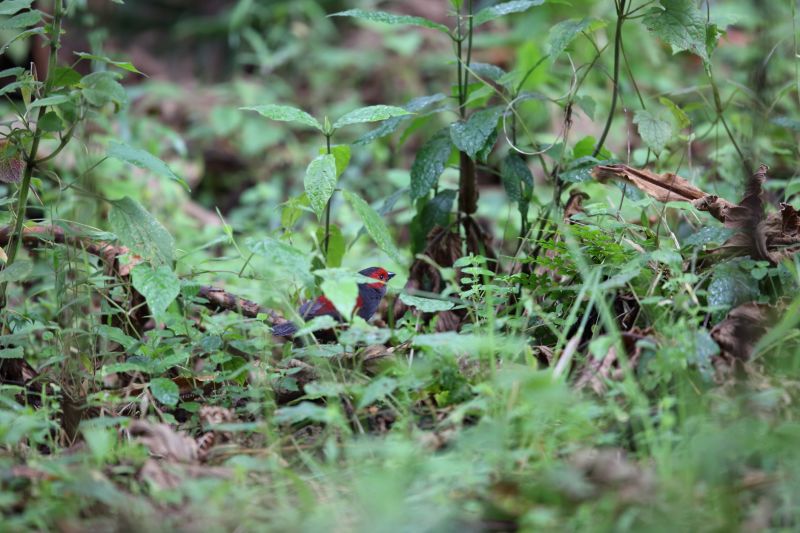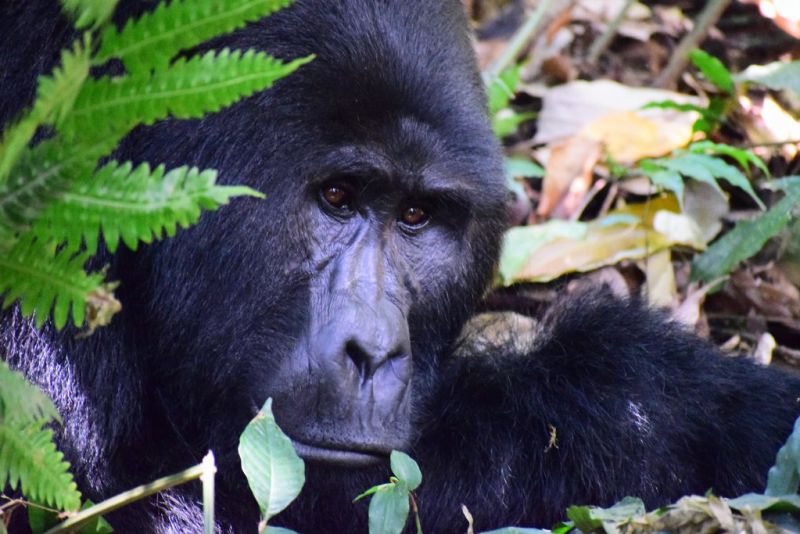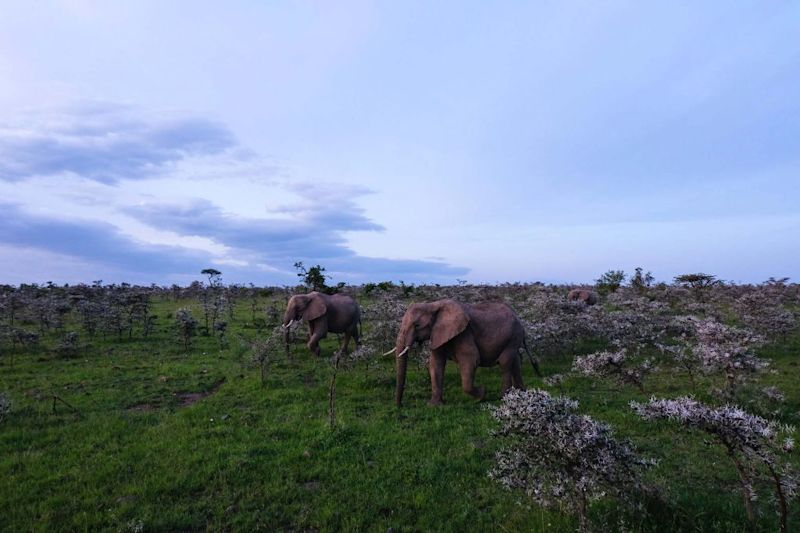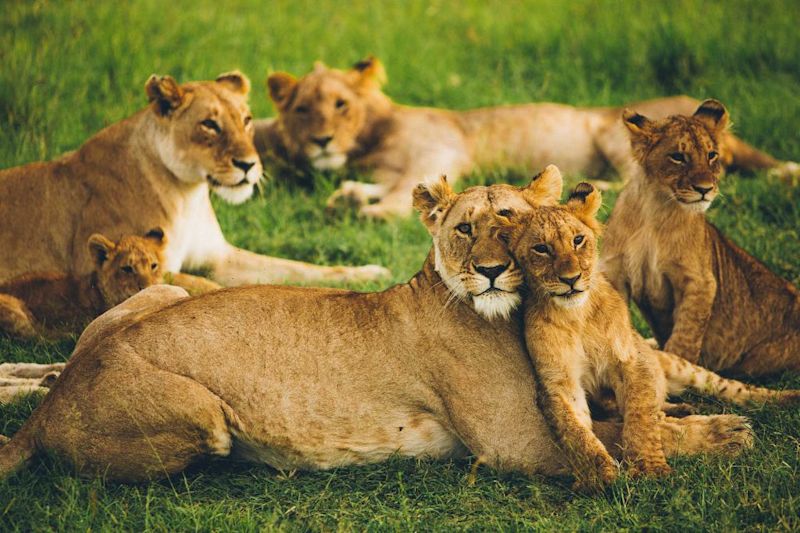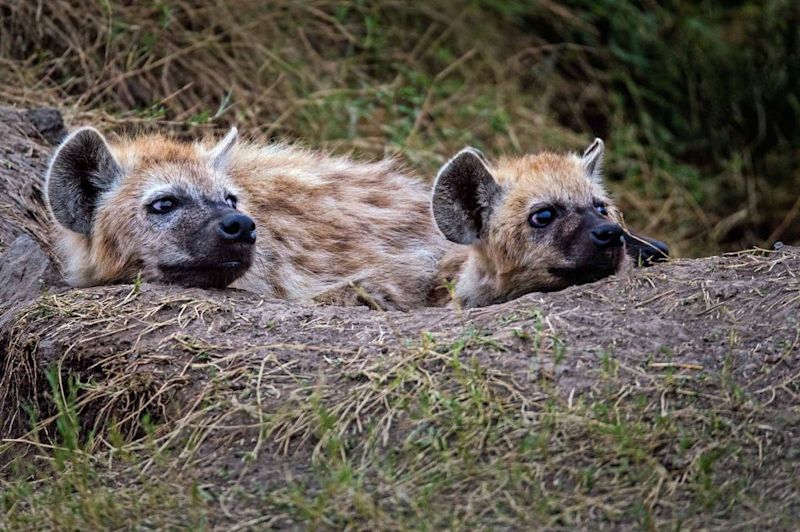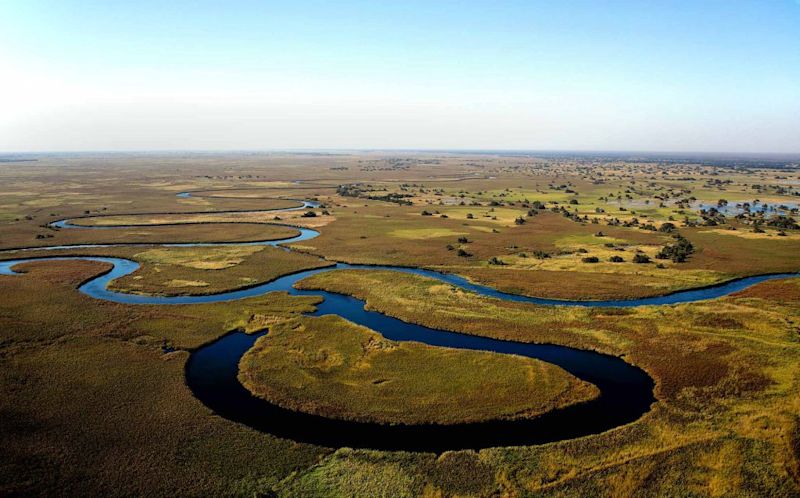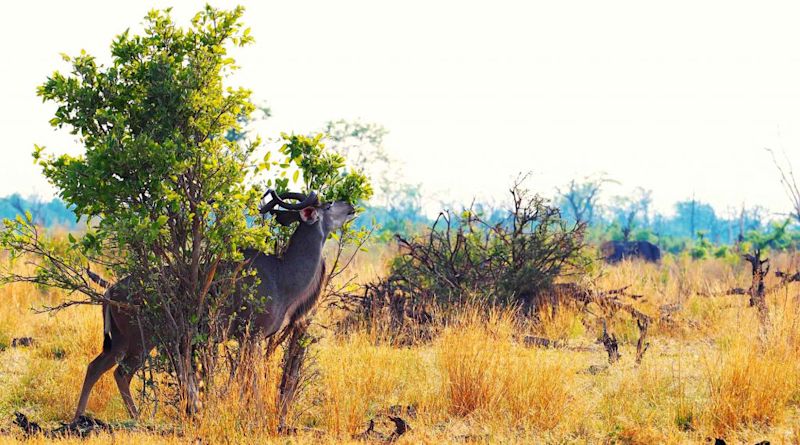There truly is no place like Africa. From sprawling grassland plains, vibrant sunsets the colour of magic to the wildest of environments. Africa is home to the most abundant of wildlife communities. In particular, the East of Africa offers some of the best African safaris and has a little something special for everyone.
So where is the best place for a safari holiday in Africa? We've had a look at some of the most exquisite locations for this and we'll let you decide on the best African safari!
- Serengeti National Park
- Ngorongoro Crater
- Bwindi Impenetrable Forest
- Masai Mara National Reserve
- The Okavango Delta
There is nothing quite like an African safari. It's a real once-in-a-lifetime experience.
– Ben
Serengeti National Park
There are few places with as many tricks up its sleeve as the beautiful Tanzania. In addition to the famous Mount Kilimanjaro and Ngorongoro Crater, the long list of attractions would be incomplete without the world renowned Serengeti National Park.
A stretch of land that spans over 30,000 square meters, it has the highest concentration of wildlife in Africa. It's also home to the Big Five and the Great Wildlife Migration. The Serengeti is without a doubt the most famous wildlife sanctuary in the world and should be at the very top of your list of best African safaris.
The rich ecosystem that thrives in the Serengeti is one of the oldest in the world. Interestingly, over the past hundreds of thousands of years, the very essence of this abundant natural wonder has remained relatively unchanged.
Prides of lion roam the Serengeti and most visitors manage to spot a few during their safari
Serengeti wildlife
The Serengeti National Park is home to an unbelievable amount of animals. We’re talking about wildebeest measured by the millions, and an estimated 250,000 zebra and 300,000 gazelle.
Among these animals, you can also expect regular sightings of elephant, hartebeest, giraffe, warthogs and hippos, which also make up tens of thousands of the animals that reside here. Predators such as the lion, cheetah and hyena are never too far off and can be seen quite regularly.
Leopard, black rhino and many species of antelope such as the kudu and dik dik make up some of the lesser-seen animals that can be seen while on safari in this magical location.
Ultimately, in the way of wildlife viewing, there is always something spectacular to be seen. This is why the Serengeti is at the top of the list of best African safaris.
The rich ecosystem that thrives in the Serengeti is one of the oldest in the world.
A baboon in the Serengeti
Best time to visit the Serengeti
The Serengeti is considered one of the best African safaris for many reasons, but the fact that the wildlife viewing is amazing all year around, really is a bonus. You should consider planning your safari between June and October if you want to see predate action. You should visit in February for the calving season. If you are most interested in increasing your chances of seeing the migration then it is good to know that you can see this at any time of the year, depending on where in the Serengeti you venture to. That being said, you should keep in mind that there are 3 main regions of the park, and the migration - which is always on the move - will cross through each region during specific months.
1. Seronera Valley region
- Also known as Central Serengeti
- Most popular section of the park
- Vegetation consists of savanna plains, decorated with widely spread baobab and acacia trees
- Highest concentration of wildlife in the park
- Suitable to visit all year round
- The migration can be seen in this region between April and November
2. The Western Corridor region
- It is more remote than Seronera Valley
- Best known for the Grumeti River
- Home to a healthy population of hippopotamus and crocodiles
- Landscape of dark clay soil and a higher density in forests and bush vegetation
- The great migration passes through the Grumeti River in a dramatic setting for the millions of animals embarking on their annual relocation – this happens between May and July
3. Northern Serengeti region
- This area of the park is considered the most remote in location
- Quieter of the Serengeti regions (great for avoiding crowds)
- Vegetation consist of sprawling plains and woodlands
- The only consideration to this region of the park is that it requires long distance travelling
- Between July and September, visitors can witness the wildebeest migration embarking on one of the most dangerous challenges of their journey – crossing over the Mara River where hungry crocs await!
Note that there are a few other parks in northern Tanzania that together with Serengeti make up the so-called Northern Circuit. The Northern Circuit refers to several national parks, all of which offer epic safari experiences. Each park has its own special selling points and are well worth visiting. We especially like Lake Manyara, Tarangire National Park and Ngorongoro Crater.
To witness any part of the Great Wildebeest Migration is to join a very small, very lucky worldwide club!
Ngorongoro Crater
The Ngorongoro Conservation Area in Tanzania – home to the Ngorongoro Crater – is one of the best African safaris you can embark on. It's also a World Heritage site and is considered one of Africa’s seven natural wonders.
What else makes the Ngorongoro Crater so spectacular? It's one of the world’s largest calderas that isn’t a lake. A caldera is a crater that has been formed by the eruption and collapse of the mouth of a volcano. It has also been said that had the volcano not collapsed, it would have towered higher than Mount Kilimanjaro. If you've embarked on a Kilimanjaro climb, you’ll know just exactly how crazy that really is! The crater itself spans over 260 m² and is 610 m deep. It's one of the most breathtakingly beautiful landscapes, and makes the ideal backdrop for one of the best African safaris.
A view from the rim over the Ngorongoro Crater during the dry season, when animals are easier to spot
Ngorongoro Crater wildlife
From lush green vegetation and the remains of a dense green forest to an array of desert plants, the fertile soil of the Ngorongoro Conservation Area provides rich lowland grazing and decent coverage for the 25,000 wild animals that call it home. We repeat: 25,000 wild animals! This massive number of animals is made up of a wide variety of species. If you have decided to embark on a trip to Ngorongoro, you can expect to see wildebeest, zebra, buffalo, elephants, gazelles and eland which can be seen in abundance throughout the area. Depending on what time of year you decide to go, you can witness part of the Great Migration.
Ngorongoro is also home to the critically endangered black rhino, which allows you to witness these beautiful creatures in their natural habitat. Spotted hyenas, wild dogs and big cats such as lion, leopard and cheetah also reside here which makes for an interesting melting pot of wildlife.
An ostrich in Ngorongoro Crater
Best time to visit Ngorongoro Crater
One of the many fantastic things about Ngorongoro Crater that makes it one of the best African safaris is that it's a great location to visit all year around. This is ideal if you only have a specific window of opportunity in your calendar. Every season does, however, have its pros and cons, as shown below. The dry season is the best time of year for spotting large game.
June to October
- The weather is great (though on the hot side)
- Little to no rain
- The grass is dry and short, which is great for game spotting
- Can get a bit crowded
November to May
- This is the wet season, so there are rainy days
- The landscape is lush and pretty
- This is calving season, so you can spot baby animals
- Many migratory birds can be spotted
- Fewer visitors, so less crowding
- Nights can be cold
Ultimately, deciding when to go will depend on your preference and what you are hoping to experience.
An elephant herd in Ngorongoro Crater with the crater wall rising steeply up behind
Bwindi Impenetrable Forest
When you think of an African safari, be sure to expand your options to the lush forests of Uganda for something slightly different! Not all safaris are grassy plains, wild with lions and the Big Five that can be seen from a safari vehicle. Some can be reached on foot, situated deep within lush green forests. This brings us to the Bwindi Impenetrable National Park in Uganda. This national park is an ancient forest, spanning over 300 km2 and was named a UNESCO World Heritage Site owing to its thriving wildlife and diverse ecosystem. This flourishing forest provide habitat to one of the most incredible animals in the world. The mountain gorilla.
Mist and Bwindi Forest go hand in hand
The majestic mountain gorilla
Although massive in size, with what can be quite an intimidating demeanour, the mountain gorillas of Uganda can be considered gentle giants. These mysterious creatures are shy and won’t feel the need to defend themselves if you are peacefully observing their territory. These animals are however unbelievably strong and can become quote aggressive if they feel threatened. This is why respecting their space while on a gorilla trekking safari is so important. Baring in mind that mountain gorillas share 98% of their DNA with that of a humans, the presence of these endangered primates can be a truly fascinating and humbling experience.
Gorillas share 98% of their DNA with humans and the presence of these endangered primates can be a truly fascinating experience.
A gorilla trek is an experience unlike any other safari. For one, you won’t have the convenience of a vehicle to get you around inside the park. The entire trek will be done on foot. You will be bundu-bashing through the thick of the forest. You may encounter rain, which can lead to trekking through thick mud. This can make the trek a bit challenging. A good level of fitness can definitely make these obstacles easier. Mud and all, sitting on the floor of a towering forest, observing these gorillas in their natural setting, makes every challenge 100% worth it.
Mountain gorilla in his natural habitat
What animals will I see in Bwindi Impenetrable Forest?
Well, other than these majestic primates, the Bwindi impenetrable Forest is home to very few other mammals. There have been sightings of elephants and chimpanzees, but this is very rare. There is, however, an abundance of birdlife. This forest is any bird lover's idea of heaven. You might easily see as many as 100 species of birds in one day! Expect to see birds such as:
- The dusky crimsonwing, which lives in the Albertine Rift montane forests of East Africa and nowhere else.
- The yellow-eyed black flycatcher, also native to the Albertine Rift montane forests.
- The colourful bar-tailed trogon.
A gorgeous little dusky crimsonwing
The sound that an ecosystem of some 350 different bird species echoes through the treetops of the forest makes for a feast for the senses.
When is the best time to visit Bwindi Impenetrable Forest?
There are two types of seasons in the Bwindi Forest: rainy and dry. We describe each type of season below. The dry seasons are the best times for gorilla trekking on our opinion.
Rainy seasons
- March to May and September to November
- This season is very wet and misty
- The trek can be a muddy escapade
- Mist can make it difficult to spot the gorillas
Dry seasons
- June to August and December to February
- Considered the best time to go
- Better trekking conditions, as the ground is drier
- Can get quite cold in the thick of the forest, so be sure to pack some warm layers
Keep in mind ...
One very important aspect of planning a gorilla safari is that you will need to plan way in advance. Trekking with gorillas truly is a once-in-a-lifetime experience and getting to spend time in their presence comes at a cost. Each person will need to pay a US$800 permit fee.
This photo was obviously taken with a zoom lens, but you're allowed to come within a few metres of the gentle giants
This may seem hefty, but it's this implementation that has increased the success of the conservation efforts and has grown the mountain gorilla population. The growing success in conservation, will hopefully see them out of the list of endangered species in the future. The national park also only issues a very limited number permits a day – which is where effective planning in advance really comes in to play. Be sure to keep this in mind when planning your African safari holiday.
Only a very limited number of trekking permits are issued a day, so plan your trip well in advance!
Masai Mara National Reserve
Occupying over 1,500 square kilometres, the Masai Mara National Park is found in the southwest of Kenya along the Tanzanian border. This national reserve is one of the greatest wildlife sanctuaries in Africa. A friendly and cooperative relationship between the Masai Mara and Serengeti Parks has helped to protect the rich biodiversity of the East African region. The Masai Mara is also home to a section of the Great Wildebeest Migration, an annual spectacle that sees millions of wildebeests migrate north to find greener pastures.
The friendly relationship between the Masai Mara and Serengeti Parks has helped to protected the rich biodiversity of the East Africa region.
Elephants in Masai Mara navigating their way through a thorny landscape
The vegetation of the Masai Mara consists of what may seem like infinite grasslands, interrupted by rivers and the occasional gathering of acacia trees. The Mara River is the main river that runs through the reserve. It creates swampy ground throughout the reserve. Although safaris are conducted predominantly by 4x4s in the reserve, you can also go on guided safari walks. Safari walks allow you to see details that can be missed while on a game drive.
What animals will I see in Masai Mara?
Like most of the major wildlife reserves in East Africa, the Masai Mara will see millions of wildebeest, but unlike the other reserves, this one bares witness to perhaps the most remarkable point in the migration: the crossing of the Mara River. Although the exact arrival time of the migration varies year on year, there are certain months that increase your chances of seeing a river crossing.
A pride of lions in Masai Mara quite simply nailing family photo day!
The migration is not the only wildlife sighting to get excited about here. It is good to know that spotting three of the Big Five is very likely. The leopard and the black rhino are quite shy and are among the less commonly seen animals in the Masai Mara. Bat-eared foxes, black jackals and a wide variety of buck can be seen here.
When is the best time to visit Masai Mara?
Much like it's neighbouring wildlife safari locations, the Masai Mara is good to visit all year around, but some months are just better than others. The dry season is the best time of year for game spotting. The wet season is the best time of year for viewing baby animals, migratory birds and beautiful, lush scenery.
June to October
- Peak season
- Dry season
- The weather is great, though hot, with little to no rain
- The grass is dry and short, which makes wildlife viewing much easier
- The park can get a bit crowded, with long waits at the gates
November to May
- Wet season
- The scenery is lush and beautiful
- There will, of course, be some rainy days
- You can spot many migratory birds
- A relatively empty park
- Very cold in the mornings and the evenings
Two young hyenas in their den, peeking out at the world
The Okavango Delta
One of the most unique safari locations in Africa can be found in the north of Botswana. The Okavango Delta is a marshy inland wetland that is filled to the brim with water due to the seasonal flooding of the River Delta. The source of the seasonal floods lies in the Angolan highlands. Unlike most delta systems, this one in particular does not lead to the ocean, but rather away from it to the Kalahari desert plains.
What is even more fascinating about this delta, is that it floods during Botswana's dry season which means that the landscape is a permanent swamp all year around. It is due to this phenomenon that the wildlife that reside here, have come to rely so heavily on synchronising their movements, growth and life cycles to that of their environment. The ecosystem here is strong and each individual plays an important part of it.
An aerial view of part of the Okavango Delta
There are many aspects to the Okavango that make it one of the best African safaris, but the fact that most of the safari 'drives' are actually taken by boat is a total winner. Motorised boat rides, or Mokoro rides as they are also known, can redefine the conventional safari experience and offers a truly unique perspective to this incredible destination.
What animals will I see in the Okavango Delta?
The Okavango is home to the richest wildlife in Africa. Thousands of different species of plants, birds and animals reside here. Unlike the previous safari destinations, this one is home to the white rhino which can be seen on occasion along with the black rhino and the cheetah which are the least common to see. Expect to see a healthy number of elephants, giraffes, hippos, buffaloes, wildebeests and zebras as they all thrive off the rich wetland. Lions, leopards and hyenas can be seen on occasion as well. All in all, you are in for a real treat!
A leopard in a leafless tree in Okavango
When is the best time to visit the Okavango?
Unlike the previous locations, the Okavango Delta is completely dependent on the seasons and you can't really go at any time of year and have a guaranteed good experience. The year is divided into a rainy season and a dry season. The dry season is the best time of year to visit the Okavango Delta, as explained below.
Dry season
- Peak season
- May to October
- The seasonal floods take place in the dry season (you read right!)
- High concentration of wildlife at the waterholes and rivers
- Little to no rain
- Fewer mosquitoes
- It gets very cold when the sun goes down
Rainy season
- Off-peak season
- November to April
- The scenery is green
- Expect lower rates
- Calving season
- Relentless rain that can continue for days
- Many areas become inaccessible and close for the season
- It's summer and can get extremely hot
A kudu on Chief's Island in Botswana
So as an overview, remember that the seasonal flooding of the Okavango is what makes it so unique and this takes place in the dry season and not the wet season, as some would think. This makes May to October the best time to get your boat safari on!
